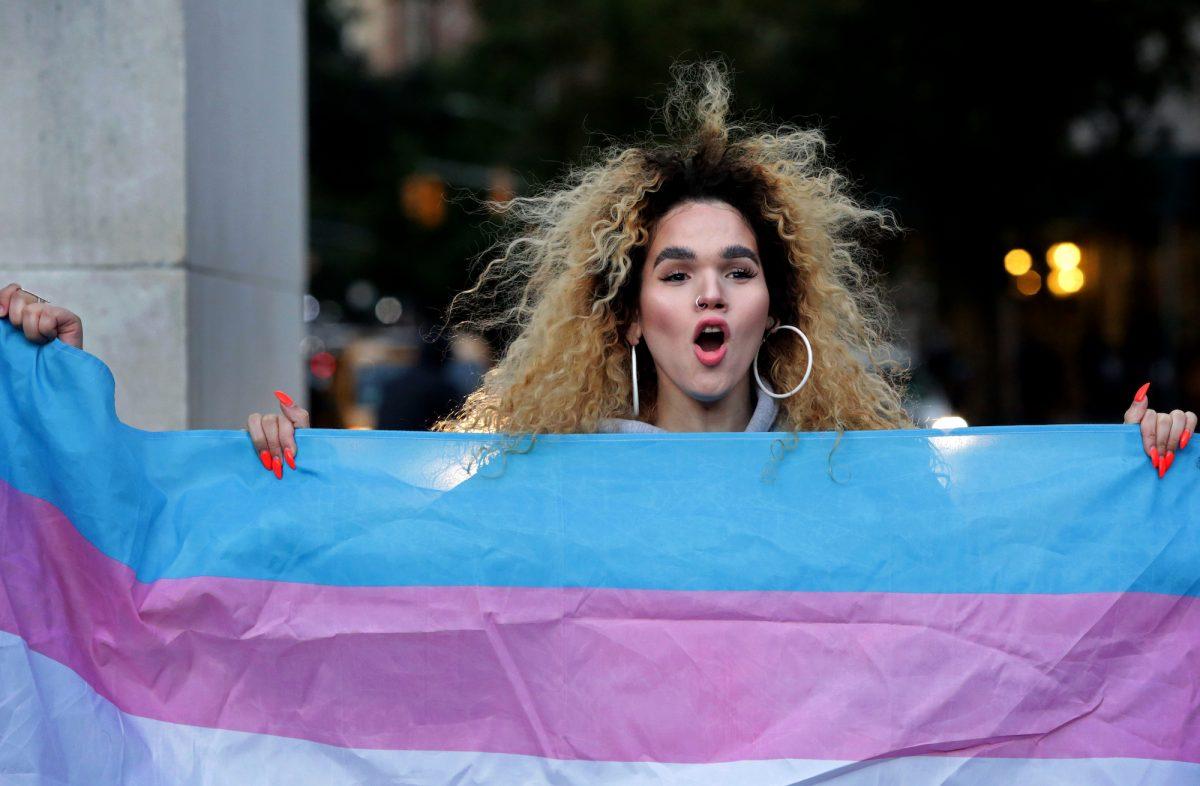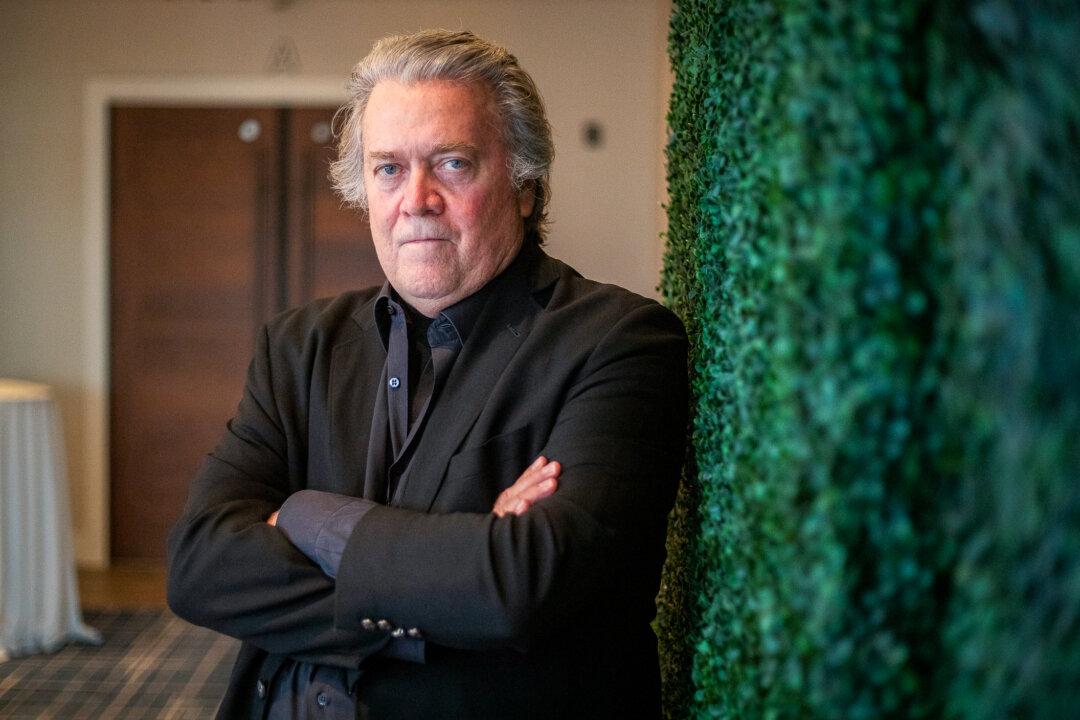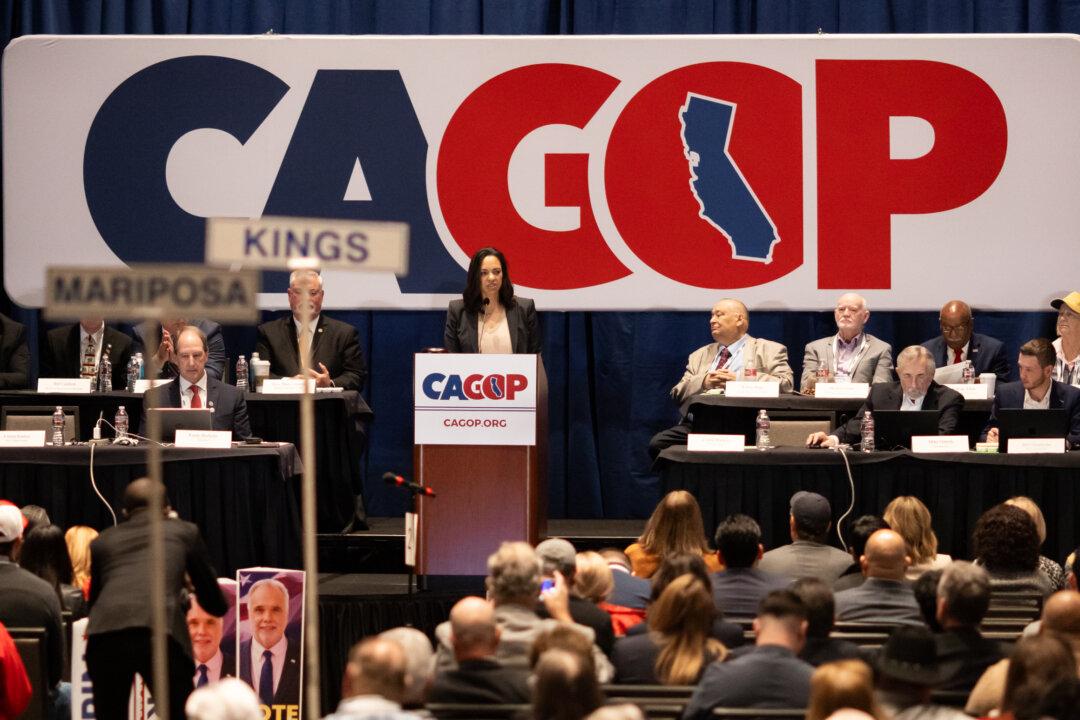Cat Cattinson doesn’t believe in transgender ideology even though she identified as a “trans man” for more than 15 years.
“I’m a detransitioner,” she told The Epoch Times in an interview. “I identified as trans when I was a child, but now I accept my biological sex. I believe that a woman is an adult, human female. I don’t believe that trans women literally are women. I don’t believe that trans men literally are men. I still believe they’re biological males and females.”
She has many regrets about transitioning, but none as great as trying to take her own life twice as a teen, or injecting herself once a week with 40 to 60 milligrams of testosterone.
She has been shunned by trans activists and ignored by politicians, the media, and the medical community.
Childhood Years
Cattinson has suffered for years with gender dysphoria, eating disorders, anxiety, and depression.
After a traumatic experience when she was about five years old, Cattinson recalls hinting to her mom that she wanted to be a boy.
“I remember asking my mom, if it was possible for people to change sex, and she didn’t really know much about this,” she said.
Her mom told her that she’d heard of some men becoming women, but that it was “basically impossible” for a girl to become a boy, Cattinson said.
Mental Health
A “chubby kid” who was bullied at school, Cattinson developed anorexia and bulimia.“They bullied me for being fat,” she said. “I was bullied a lot for my body, and I developed an eating disorder.”

The bullying only got worse when she hit puberty. She developed early and, at 13, boys teased her about her full figure, she said.
“I got teased as a teenager,” she said. “I got curves really quickly. I had really big boobs all of a sudden. ... There was nothing I could do about it, and that was really embarrassing.”
Over time, her eating disorders and gender dysphoria only got worse, and she developed anxiety and depression.
The Internet
In the days that preceded smartphones and social media, Cattinson turned to the internet to find support, and she found a web forum where females were posting messages about transitioning to male.“So in my 13-year-old brain, I believed that it was possible, and I just thought my mom was ignorant for not knowing that,” she said. “I came out to a few friends at this point, and but you know, it was kind of scary, because I hadn’t even met anyone else who was trans at that age.”

“I didn’t really know trans people in real life—only on the internet,” she said.
At that time, the online trans community was pretty small compared to nowadays, said Cattinson. But many of them were into “emo” bands, wearing skinny jeans, “cutting,” and suicidal behavior.
“The aesthetic is similar to goth, but there was a particular type of music—it’s really kind of like heavy metal mixed with punk, and mixed with pop a little bit—that a lot of kids were listening to,” she said.
Coming Out as Trans
Two more years passed before she told her parents she was “trans.”“I think I’d met one other female who identified as a male at that point,” she said. “I told my parents and, initially, my mom was somewhat supportive, but then after talking to my dad, they both basically said I was crazy—that I should never try to transition because it would not work out well for me.”
Her parents listed all the reasons why she should not transition. One of them was that she would be a 5-foot-2 man.
“That was very painful for me at the time,” she said.
Without family support, Cattinson began to waver on whether she wanted to transition.
“When I was 17, my parents took me to a gender therapist because I’d asked for help to deal with my gender identity. And so, they took me to this person who was like the head honcho of gender care in Sacramento,” she said.
“I thought that he would just help me sort out ... or explore some of my psychological issues, but instead he affirmed me as a man, or I guess a boy, at age 17 on our first appointment and started calling me ‘he’ and ‘him.’”
By the third appointment, the doctor told her parents they should affirm their “son’s” new trans male identity and recommended that she start taking cross-sex hormones, Cattinson said.
“On one hand, it felt good that he affirmed, but on the other hand I felt like he barely knew me. I had a severe eating disorder, depression, and anxiety, so it just felt like he wasn’t really listening to me. I was just given a standard of care that didn’t feel very personalized,” she said.
Voice Changes
Cattinson is a singer from a musical family. She performs some jazz and country and has created her own style of music, she said.

“I was frustrated because even though I wanted to physically transition, I was worried about my singing voice. I had been performing with my family, I’d done some other types of performances by then, and I knew that testosterone would change my voice,” she said.
“I only knew one other trans person in real life. I did start going to support groups at 17 or 18, before I went to college, and I did meet a lot of other trans people through that.”
College Years
About a year later, Cattinson started college in Santa Cruz, Calif.“I went back into the closet ... because college is already really scary. You’re meeting a lot of new people,” she said. “I’m very feminine, very petite. ... I was just always read as female anyway, so I didn’t even try to live as a man in college.
“I still had a lot of issues. I was struggling really bad with gender dysphoria, depression, and eating disorders, and so I ended up dropping out of college a few times, and I developed alcoholism and substance abuse.”
Although booze and cocaine temporarily masked her pain, they only made her problems worse, she said.
Cattinson had a couple of relationships with men in college. She didn’t tell her boyfriends about her trans identity at first. In both cases, she was afraid they would break up with her. And when she did finally tell them, her fears were realized. They dumped her.
Her second boyfriend broke up with her a couple of years ago.
“I told him that I didn’t identify as a woman, and the reason he gave for breaking up with me was that he’s not gay,” she said.

Coming Out as Trans
Cattinson made up her mind then to deal with her gender dysphoria once and for all.“I had heard from trans activists, and the narrative is that if you have gender dysphoria, if you don’t come out as trans and transition, then you’re extremely likely to kill yourself—there’s basically no hope for you. Transition is the only option,” she said. “And given that I already had so many psychological issues, I was just like, ‘OK, I’m going to give this a try.’”
Cattinson announced she was trans on social media, and her friends and family reacted with worry.
Planned Parenthood
Because she couldn’t pass as a man without it, Cattinson sought medical intervention. By then, she was 28.“I felt a lot of pressure to start medicalizing myself,” she said. “I came out as trans, and I started taking testosterone about six months later.”
She knew that Planned Parenthood provided transition-related resources, so one day she called them.
“I wasn’t in therapy at this point. I was still struggling with alcohol and substance abuse, and I hadn’t completely resolved my eating disorder,” she said.
The Planned Parenthood doctor in Sacramento prescribed her testosterone without an in-person visit.
“When I talked to Planned Parenthood, I even mentioned to them that I had other issues, but within 30 minutes, the doctor prescribed me testosterone. She didn’t require therapy, no labs ... and I went and picked it up the same day,” she said. “It was unbelievable even to me.”
Cattinson read the written instructions about how to inject the testosterone, or “T” as it’s called in the trans community. She started with 40-milligram shots once a week and gradually worked her way up to 60-milligram doses over the next four months.
“I had been performing as a singer prior to that, and for the first three months or so, my voice was still OK. It was slowly getting deeper, and I started to have health issues,” she said.
But because she was so enthralled with the idea of transitioning, Cattinson “pushed down and ignored” a mysterious pain she had developed in her right side.
“I started to get heart palpitations while I was on testosterone and while I was binding,” she said. “I was nauseous all the time. When I ate fatty foods or drank alcohol, I would get super nauseous and throw up. Even if I just had one alcoholic drink, I would feel really sick,” she said.

Then one day when she tried to sing, “nothing would come out,” Cattinson said. “It felt like there was a barrier in my throat.”
The problem got worse.
“When I’d speak for a long period of time, it was very painful, and it was painful to sing,” she said.
She later learned about “some anatomical problems that happen when an adult female takes testosterone” and was worried she might never be able to sing normally again.
She stopped the testosterone injections.
A Changed Mind
By then, she had already been scheduled for “top” surgery, a double mastectomy, with a surgeon.“[A Planned Parenthood] doctor who I talked to for about 30 minutes ... wrote me a letter and said, ‘You’re good to go.’ She’d never met me in person,” Cattinson said.
Cattinson again questioned the so-called “care” she was getting and second-guessed the idea of making permanent changes to her body. She decided not to go through with the surgery.

“My mental health was getting worse, not better. So, I just canceled it,” she said. “Transitioning just was so damaging in my life.”
Cattinson had also noticed “some disturbing behavior” among others in the trans community. The activists had become more aggressive and were asking parents of gender dysphoric children if they would rather have a trans daughter or a dead son, or a trans son or a dead daughter, she said.
‘Based on Lies’
Today, Cattinson believes the whole notion of a girl becoming a boy, or a woman becoming a man is a “denial of reality.”“The whole thing is based on lies,” she said.
Because she doesn’t believe that trans women are literally women or that trans men literally are men, Cattinson has come under fire from trans activists.
“You are not allowed to say that,” Cattinson said. “I’ve been banned from TikTok. People say that trans people are dying because of me, and so they think that they’re justified in sending hate and death threats to me [and] trying to get my account banned.”
Cattinson, who is bisexual, believes people who identify as trans are deserving of respect and dignity, but she looks disfavorably on the trans activists who tried to doxx her and have threatened her life on social media.
“I’ve received multiple death threats and hate,” she said. “People send me hate because they say I’m killing trans kids—that trans kids are going to commit suicide because of me, or that transphobic violence is happening because of me stating my opinions.”

Cattinson doesn’t believe the claims of some doctors that gender transitioning is well-researched and effective. She contends that transgender ideology is harmful, particularly when it comes to medically transitioning.
“These medical interventions aren’t supported by science. They’re dangerous. The long-term effects are largely unknown. So I don’t support transitioning in minors. I think transitioning is experimental for everyone, but especially for minors,” she said.
“I think it’s absolutely harming people, especially children and people with severe mental illnesses like I had. It’s absolutely dangerous for them,” she said. “The hormones themselves—cross-sex hormones—can make you mentally unstable.”
Indoctrination in Schools
While she believes schoolchildren should be taught “some people believe you have a thing called gender identity,” Cattinson said they shouldn’t be taught as though it were scientific fact.“You have trans education as part of sex ed now in schools,” she said.

“It’s literally being taught as if it’s fact, like everyone has a gender identity—you’re cis, or you’re trans, or non-binary,” Cattinson said.
“Kids are definitely being groomed, not only by these online communities, but I mean, honestly, like the entire Democratic Party supports it,” she said. “This is coming from someone who was raised liberal. I am left-leaning on most issues really, but I no longer feel supported by the Democratic Party because you have these laws being made that are treating trans identity as if it’s fact.”
She warned that with kids having access to smartphones at younger and younger ages, they’re coming across more transgender information, pornography, and other inappropriate websites.
‘A Blessing in Disguise’
Though she has regrets about transitioning and says she wishes she had been fully informed about the effects of testosterone, Cattinson tries to see the bright side: It led her down a path to spiritual meditation, yoga, and a healthy diet, which she believes have had helped her to regain her health.
“It’s really forced me to really delve deeper into that, which is actually a blessing in disguise,” she said. “I’ve been to a lot of doctors and therapists—some who were decent, and some who weren’t—and honestly, meditation and spirituality has been more helpful to me than anything. And this whole thing has kind of brought me back to that—just self-care and spiritual health.”
She no longer takes any kind of medication and has abstained from alcohol and drugs.
These days, Cattinson is more optimistic about life in general.
“I’m actually doing a lot better than I have been in quite a while,” she said.
She has returned to school and expects to finish her Bachelor of Science degree in molecular, cellular and developmental biology in May.
“I’ve had to relearn how to sing. I still miss my singing voice all the time. I just feel that was a really special gift that I was born with, and now my voice is completely different. It’s harder to sing,” Cattinson said.
“But I also feel like I’ve learned a lot through this process. I’ve learned a lot about myself. I feel by telling my story, I can maybe help someone who’s going through the same thing.”







